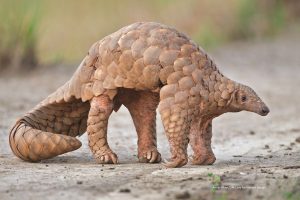THE CONTEXT: To enforce the appropriate national and international laws and to track the decline of the species, researchers of Zoological Survey of India (ZSI), Kolkata, have now developed tools to tell apart the scales of Indian pangolin (Manis crassicaudata) and Chinese pangolin (Manis pentadactyla)
ANALYSIS:
- Pangolins, despite being listed in Schedule I of Wildlife (Protection) Act, 1972 continue to be the world’s most trafficked mammal.
- The primary demand for its scales is in the making of traditional East Asian medicines
- They characterised the morphological features and investigated genetic variations between the two species by sequencing 624 scales of pangolins and comparing the sequences with all eight pangolin species.
- Based on the size, shape, weight and ridge counts on the scales, the team was able to categorise the two species,
- These simple morphological characters can be easily measured by the use of a simple Vernier caliper.
- These metric characters will be of immense utility for the law enforcement agencies for taking spot decision during larger seizures.

PANGOLINS: FEW FACTS
- Out of the eight species of pangolin, the Indian Pangolin (Manis crassicaudata) and the Chinese Pangolin (Manis pentadactyla) are found in India.
- Indian Pangolin is a large anteater covered by 11-13 rows of scales on the back. A terminal scale is also present on the lower side of the tail of the Indian Pangolin, which is absent in the Chinese Pangolin.
- Indian Pangolin is widely distributed in India, except the arid region, high Himalayas and the North-East. The species is also found in Bangladesh, Pakistan, Nepal and Sri Lanka.
- Chinese Pangolin is found in the Himalayan foothills in Eastern Nepal, Bhutan, Northern India, North-East Bangladesh and through Southern China.
- Hunting and poaching for local consumptive use (e.g. as a protein source and traditional medicine) and international trade for its meat and scales in East and South East Asian countries, particularly China and Vietnam.
- Both these species are listed under Schedule I, Part I of the Wildlife (Protection) Act,
- According to the International Union for Conservation of Nature, Indian pangolins are endangered and the Chinese pangolins are critically endangered.
Spread the Word


